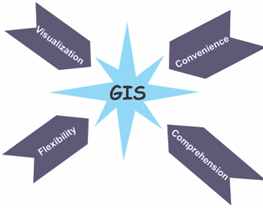Asset information management system:
GIS has the potential to revolutionize the reform procedure in areas such as consumer indexing, asset and work management, distribution network mapping, enhancing billing and collection efficiency and managing consumer relationships. Thus, GIS is a valuable tool for improved decision-making through efficient MIS. In fact, many utilities are using GIS for preparing an inventory of the existing network, gaining easy access to network details and consumer data, data analysis and network improvement, load growth projections, etc.
GIS based customer indexing and asset information management system could provide the requisite managerial inputs for decision making. This could form the basic application to which all other business processes would be integrated.
GIS would help utilities in the following ways:
• Visualization: GIS can visualize the actual network, as it is laid out on ground. It helps provide a snapshot of the locations of substations, lines and cables in relation to their geographical bearings. It also plots the locations of consumers with respect to their feeding networks (starting with the source and ending with the end-user).
• Convenience: GIS is user friendly and provides ease of data entry. Since the data are digitised, several interactive applications are possible that permit automated mapping, facilities management and network solutions.
• Flexibility: With GIS, utilities have the flexibility of choosing the other systems to share or exchange data with (i.e., Network Analysis, Inventory, Trouble call analysis); and
• Better comprehension.

Figure: Advantages of GIS as an Effective IT Support System